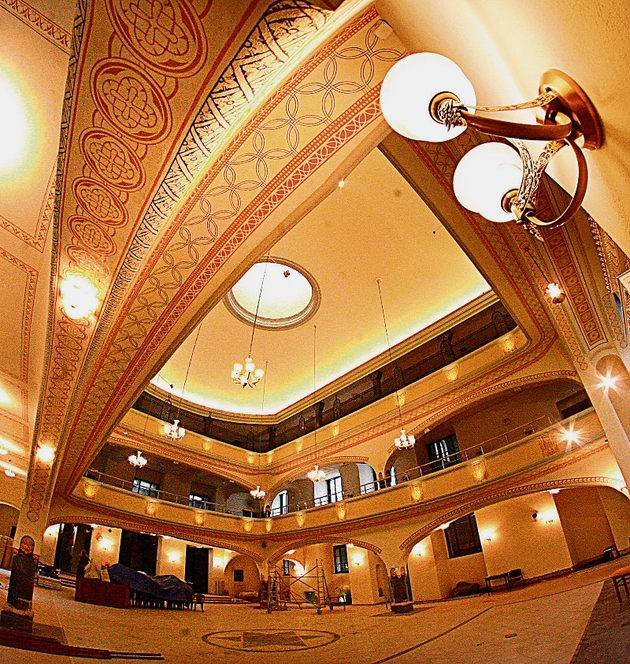By Ruth Ellen Gruber
After years of stop and start work, the historic White Stork synagogue in Wroclaw, Poland was rededicated this week. The May 6 ceremony was at the heart of four days of cultural events, religious services, commemorations and other activities. These also included an international conference on Jewish religious life in Wroclaw. The full schedule of events can be seen HERE.
The central performer was the Israeli-born, New York-based Cantor Joseph Malovany, cantor of the Fifth Avenue Synagogue. Malovany has used his wonderful voice to encourage and instill hope in Jewish revival in post-communist Europe for many years. He is, in fact, one of the first people I met in this world -- he perfomed in 1989 at the dedication of the newly restored Great Synagogue in Szeged, Hungary, and also at the Dohany St. synagogue in Budapest which, at the time, was still in sadly derelict condition: the roof sagged perilously under plastic sheeting, held up by metal bands. He has sung in Moscow, in Macedonia, in Bucharest, in Warsaw, and in many other places and on many significant occasions: one of the most poignant was in July 2001, when he chanted kaddish at the ceremony in the small eastern Polish town of Jedwabne, during which Poland's then-president Aleksander Kwasniewski, offered apologies for the fact that local Poles had massacred their Jewish neighbors there in 1941. (In 2004, Kwasniewski named him a commander of the Legion of Honor.)
As I have written previously, restoration and other work on the White Stork synagogue has been spearheaded since 2006 by the Bente Kahan Foundation, established by the Norwegian singer and stage artist Bente Kahan.
The New York Times featured the Synagogue, Kahan and the Jewish Quarter in a recent travel article.
If you are planning to visit Wroclaw -- don't forget that the annual Simcha Jewish culture festival takes place the last week of May.In recent years, Wroclaw’s formerly neglected Old Jewish Quarter, with Wlodkowica street as its anchor, has become one of the city’s hippest neighborhoods, thanks largely to the work of Bente Kahan, a Jewish-Norwegian singer who serves as founding artistic director of the Jewish Cultural and Education center of the White Stork, the city’s only remaining synagogue.
The 19th-century White Stork was once the center of one of the largest Jewish communities in Germany. Since 2005, when Ms. Kahan assumed directorship and started a private foundation to finance community efforts, the White Stork has seen extensive renovations. On May 6 the synagogue will officially reopen to the public at a ceremony unveiling a permanent installation about the history of Jewish life in Wroclaw.
The surrounding neighborhood has also been given new life. Spots like the student-friendly watering hole Mleczarnia, and Sarah, a candlelit restaurant that serves up takes on traditional Jewish dishes, have turned the out-of-the-way Wlodkowica street into one of Wroclaw’s most fashionable avenues.







